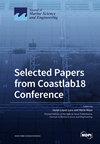基于多情景模型的内河港口船舶碳减排探索
IF 2.8
3区 地球科学
Q1 ENGINEERING, MARINE
引用次数: 0
摘要
评估碳减排潜力对于海事部门实现碳峰值和碳中和至关重要。在这项研究中,我们提出了一个通用框架,用于评估不同措施对船舶碳减排的效果,包括港口和船舶电气化(PSE)、船速优化(SSO)和清洁燃料替代(CFS)。首先,利用神经网络对未来船舶交通流量和活动水平进行预测,并提出了 ARIMA 模型。然后,详细分析了不同强度情景下各种减排措施的潜力。将提出的模型应用于武汉港,结果表明 CFS 是长期脱碳的最有效方法,在激进情景下有可能在 2025 年达到碳峰值。就中短期而言,由于技术成熟,PSE 更受青睐。SSO 主要延缓排放增长,因此是一种合适的辅助措施。这些发现为港口减排战略提供了指导,促进了绿色和可持续航运发展。本文章由计算机程序翻译,如有差异,请以英文原文为准。
Exploring Carbon Emission Reduction in Inland Port Ship Based on a Multi-Scenario Model
Assessing carbon emission reduction potential is vital for achieving carbon peak and neutrality in the maritime sector. In this study, we proposed a universal framework for assessing the effectiveness of different measures on carbon emission reduction from ships, including port and ship electrification (PSE), ship speed optimization (SSO), and clean fuel substitution (CFS). Firstly, the projection method of future ship traffic flows and activity levels relies on a neural network, and the ARIMA model was proposed. Then, the potential of various emission reduction measures was detailed and analyzed under different intensity scenarios. The proposed model was applied to Wuhan port, the results indicate that CFS is the most effective for long-term decarbonization, potentially achieving a carbon peak by 2025 under an aggressive scenario. For the short to medium term, PSE is favored due to technical maturity. SSO primarily delays emissions growth, making it a suitable auxiliary measure. These findings guide emission reduction strategies for ports, fostering green and sustainable shipping development.
求助全文
通过发布文献求助,成功后即可免费获取论文全文。
去求助
来源期刊

Journal of Marine Science and Engineering
Engineering-Ocean Engineering
CiteScore
4.40
自引率
20.70%
发文量
1640
审稿时长
18.09 days
期刊介绍:
Journal of Marine Science and Engineering (JMSE; ISSN 2077-1312) is an international, peer-reviewed open access journal which provides an advanced forum for studies related to marine science and engineering. It publishes reviews, research papers and communications. Our aim is to encourage scientists to publish their experimental and theoretical results in as much detail as possible. There is no restriction on the length of the papers. The full experimental details must be provided so that the results can be reproduced. Electronic files and software regarding the full details of the calculation or experimental procedure, if unable to be published in a normal way, can be deposited as supplementary electronic material.
 求助内容:
求助内容: 应助结果提醒方式:
应助结果提醒方式:


